Zhaoyan Ming
Skeleton-Guided Instance Separation for Fine-Grained Segmentation in Microscopy
Jan 19, 2024



Abstract:One of the fundamental challenges in microscopy (MS) image analysis is instance segmentation (IS), particularly when segmenting cluster regions where multiple objects of varying sizes and shapes may be connected or even overlapped in arbitrary orientations. Existing IS methods usually fail in handling such scenarios, as they rely on coarse instance representations such as keypoints and horizontal bounding boxes (h-bboxes). In this paper, we propose a novel one-stage framework named A2B-IS to address this challenge and enhance the accuracy of IS in MS images. Our approach represents each instance with a pixel-level mask map and a rotated bounding box (r-bbox). Unlike two-stage methods that use box proposals for segmentations, our method decouples mask and box predictions, enabling simultaneous processing to streamline the model pipeline. Additionally, we introduce a Gaussian skeleton map to aid the IS task in two key ways: (1) It guides anchor placement, reducing computational costs while improving the model's capacity to learn RoI-aware features by filtering out noise from background regions. (2) It ensures accurate isolation of densely packed instances by rectifying erroneous box predictions near instance boundaries. To further enhance the performance, we integrate two modules into the framework: (1) An Atrous Attention Block (A2B) designed to extract high-resolution feature maps with fine-grained multiscale information, and (2) A Semi-Supervised Learning (SSL) strategy that leverages both labeled and unlabeled images for model training. Our method has been thoroughly validated on two large-scale MS datasets, demonstrating its superiority over most state-of-the-art approaches.
CatchBackdoor: Backdoor Testing by Critical Trojan Neural Path Identification via Differential Fuzzing
Dec 24, 2021

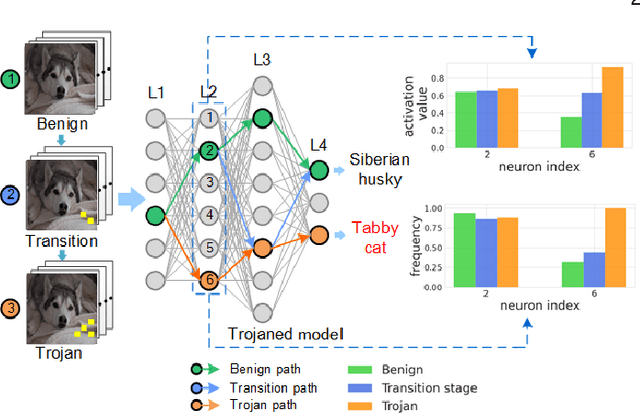

Abstract:The success of deep neural networks (DNNs) in real-world applications has benefited from abundant pre-trained models. However, the backdoored pre-trained models can pose a significant trojan threat to the deployment of downstream DNNs. Existing DNN testing methods are mainly designed to find incorrect corner case behaviors in adversarial settings but fail to discover the backdoors crafted by strong trojan attacks. Observing the trojan network behaviors shows that they are not just reflected by a single compromised neuron as proposed by previous work but attributed to the critical neural paths in the activation intensity and frequency of multiple neurons. This work formulates the DNN backdoor testing and proposes the CatchBackdoor framework. Via differential fuzzing of critical neurons from a small number of benign examples, we identify the trojan paths and particularly the critical ones, and generate backdoor testing examples by simulating the critical neurons in the identified paths. Extensive experiments demonstrate the superiority of CatchBackdoor, with higher detection performance than existing methods. CatchBackdoor works better on detecting backdoors by stealthy blending and adaptive attacks, which existing methods fail to detect. Moreover, our experiments show that CatchBackdoor may reveal the potential backdoors of models in Model Zoo.
FDA-GAN: Flow-based Dual Attention GAN for Human Pose Transfer
Dec 01, 2021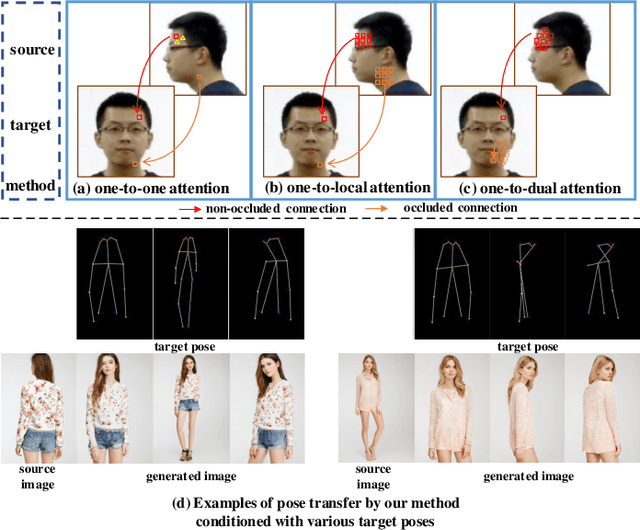
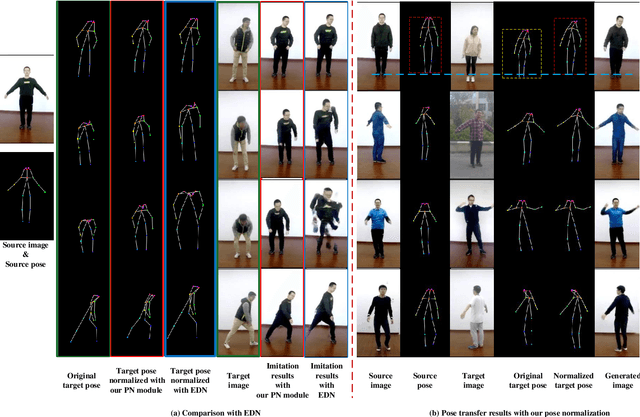
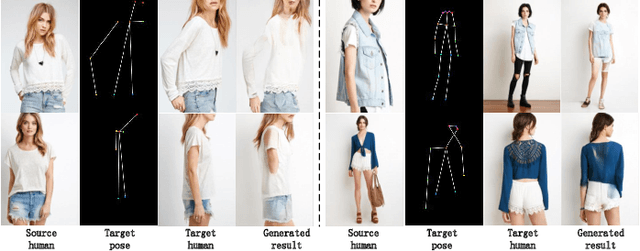
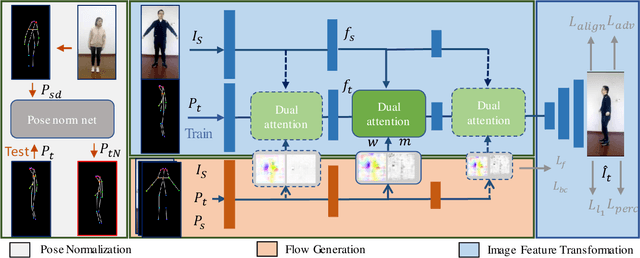
Abstract:Human pose transfer aims at transferring the appearance of the source person to the target pose. Existing methods utilizing flow-based warping for non-rigid human image generation have achieved great success. However, they fail to preserve the appearance details in synthesized images since the spatial correlation between the source and target is not fully exploited. To this end, we propose the Flow-based Dual Attention GAN (FDA-GAN) to apply occlusion- and deformation-aware feature fusion for higher generation quality. Specifically, deformable local attention and flow similarity attention, constituting the dual attention mechanism, can derive the output features responsible for deformable- and occlusion-aware fusion, respectively. Besides, to maintain the pose and global position consistency in transferring, we design a pose normalization network for learning adaptive normalization from the target pose to the source person. Both qualitative and quantitative results show that our method outperforms state-of-the-art models in public iPER and DeepFashion datasets.
EGC2: Enhanced Graph Classification with Easy Graph Compression
Jul 16, 2021

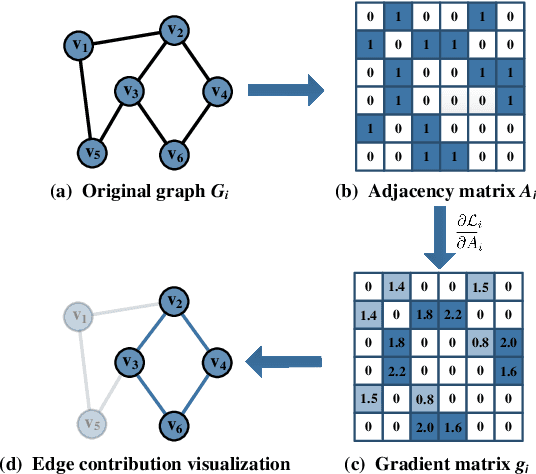

Abstract:Graph classification plays a significant role in network analysis. It also faces potential security threat like adversarial attacks. Some defense methods may sacrifice algorithm complexity for robustness like adversarial training, while others may sacrifice the clean example performance such as smoothing-based defense. Most of them are suffered from high-complexity or less transferability. To address this problem, we proposed EGC$^2$, an enhanced graph classification model with easy graph compression. EGC$^2$ captures the relationship between features of different nodes by constructing feature graphs and improving aggregate node-level representation. To achieve lower complexity defense applied to various graph classification models, EGC$^2$ utilizes a centrality-based edge importance index to compress graphs, filtering out trivial structures and even adversarial perturbations of the input graphs, thus improves its robustness. Experiments on seven benchmark datasets demonstrate that the proposed feature read-out and graph compression mechanisms enhance the robustness of various basic models, thus achieving the state-of-the-art performance of accuracy and robustness in the threat of different adversarial attacks.
Salient Feature Extractor for Adversarial Defense on Deep Neural Networks
May 14, 2021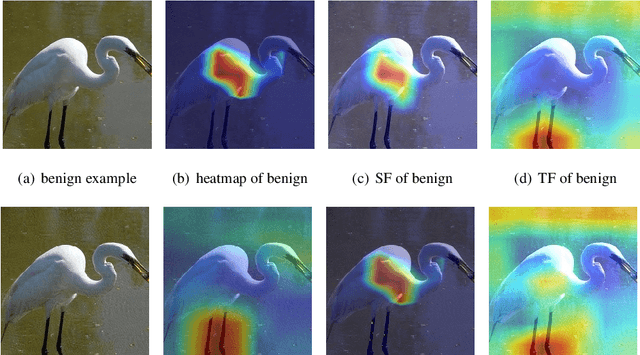

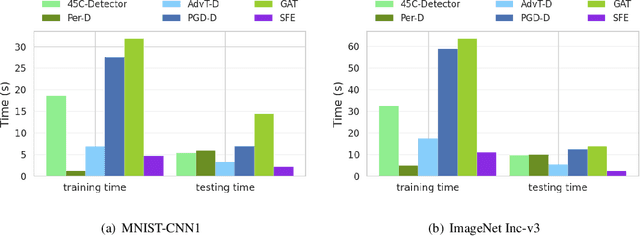
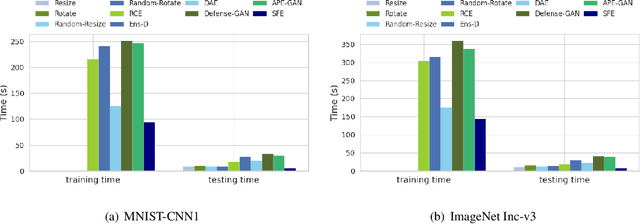
Abstract:Recent years have witnessed unprecedented success achieved by deep learning models in the field of computer vision. However, their vulnerability towards carefully crafted adversarial examples has also attracted the increasing attention of researchers. Motivated by the observation that adversarial examples are due to the non-robust feature learned from the original dataset by models, we propose the concepts of salient feature(SF) and trivial feature(TF). The former represents the class-related feature, while the latter is usually adopted to mislead the model. We extract these two features with coupled generative adversarial network model and put forward a novel detection and defense method named salient feature extractor (SFE) to defend against adversarial attacks. Concretely, detection is realized by separating and comparing the difference between SF and TF of the input. At the same time, correct labels are obtained by re-identifying SF to reach the purpose of defense. Extensive experiments are carried out on MNIST, CIFAR-10, and ImageNet datasets where SFE shows state-of-the-art results in effectiveness and efficiency compared with baselines. Furthermore, we provide an interpretable understanding of the defense and detection process.
MASS: Multi-task Anthropomorphic Speech Synthesis Framework
May 10, 2021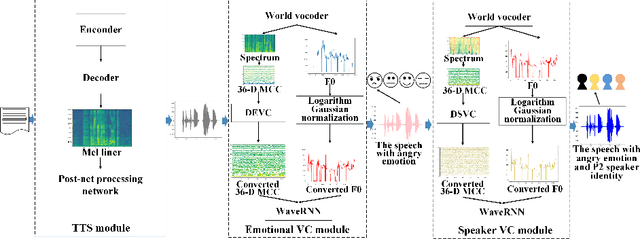

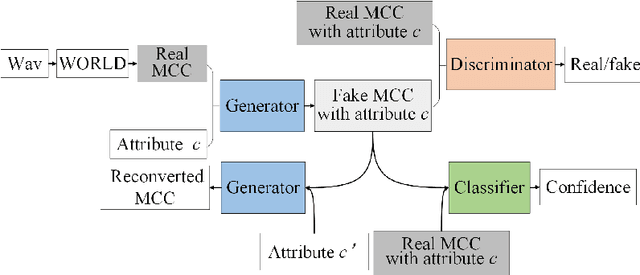
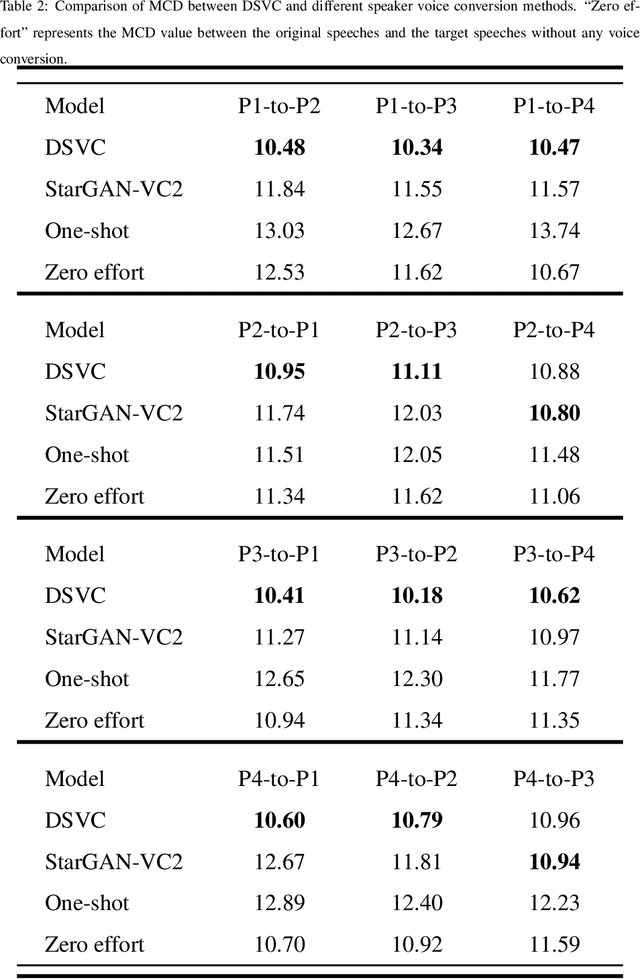
Abstract:Text-to-Speech (TTS) synthesis plays an important role in human-computer interaction. Currently, most TTS technologies focus on the naturalness of speech, namely,making the speeches sound like humans. However, the key tasks of the expression of emotion and the speaker identity are ignored, which limits the application scenarios of TTS synthesis technology. To make the synthesized speech more realistic and expand the application scenarios, we propose a multi-task anthropomorphic speech synthesis framework (MASS), which can synthesize speeches from text with specified emotion and speaker identity. The MASS framework consists of a base TTS module and two novel voice conversion modules: the emotional voice conversion module and the speaker voice conversion module. We propose deep emotion voice conversion model (DEVC) and deep speaker voice conversion model (DSVC) based on convolution residual networks. It solves the problem of feature loss during voice conversion. The model trainings are independent of parallel datasets, and are capable of many-to-many voice conversion. In the emotional voice conversion, speaker voice conversion experiments, as well as the multi-task speech synthesis experiments, experimental results show DEVC and DSVC convert speech effectively. The quantitative and qualitative evaluation results of multi-task speech synthesis experiments show MASS can effectively synthesis speech with specified text, emotion and speaker identity.
GraphAttacker: A General Multi-Task GraphAttack Framework
Jan 18, 2021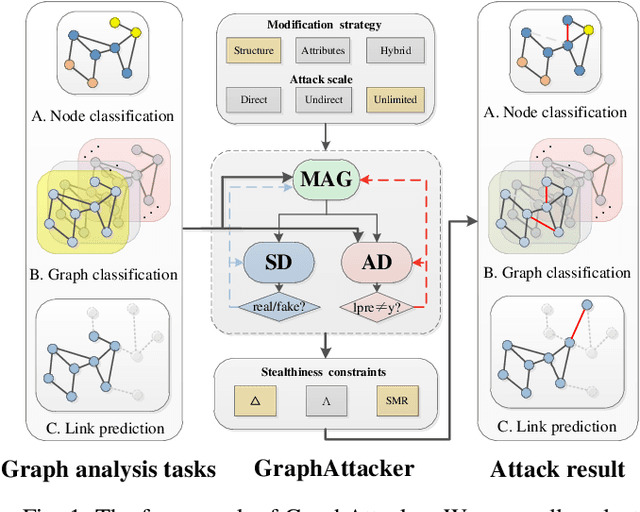
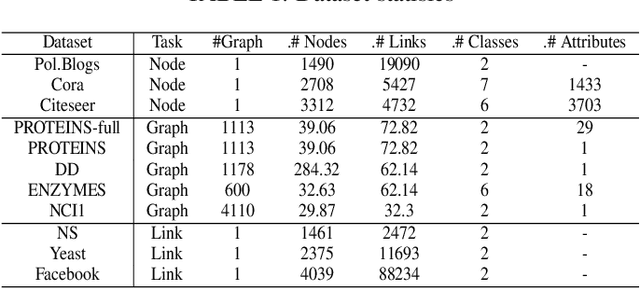


Abstract:Graph Neural Networks (GNNs) have been successfully exploited in graph analysis tasks in many real-world applications. However, GNNs have been shown to have potential security issues imposed by adversarial samples generated by attackers, which achieved great attack performance with almost imperceptible perturbations. What limit the wide application of these attackers are their methods' specificity on a certain graph analysis task, such as node classification or link prediction. We thus propose GraphAttacker, a novel generic graph attack framework that can flexibly adjust the structures and the attack strategies according to the graph analysis tasks. Based on the Generative Adversarial Network (GAN), GraphAttacker generates adversarial samples through alternate training on three key components, the Multi-strategy Attack Generator (MAG), the Similarity Discriminator (SD), and the Attack Discriminator(AD). Furthermore, to achieve attackers within perturbation budget, we propose a novel Similarity Modification Rate (SMR) to quantify the similarity between nodes thus constrain the attack budget. We carry out extensive experiments and the results show that GraphAttacker can achieve state-of-the-art attack performance on graph analysis tasks of node classification, graph classification, and link prediction. Besides, we also analyze the unique characteristics of each task and their specific response in the unified attack framework. We will release GraphAttacker as an open-source simulation platform for future attack researches.
DeepPoison: Feature Transfer Based Stealthy Poisoning Attack
Jan 08, 2021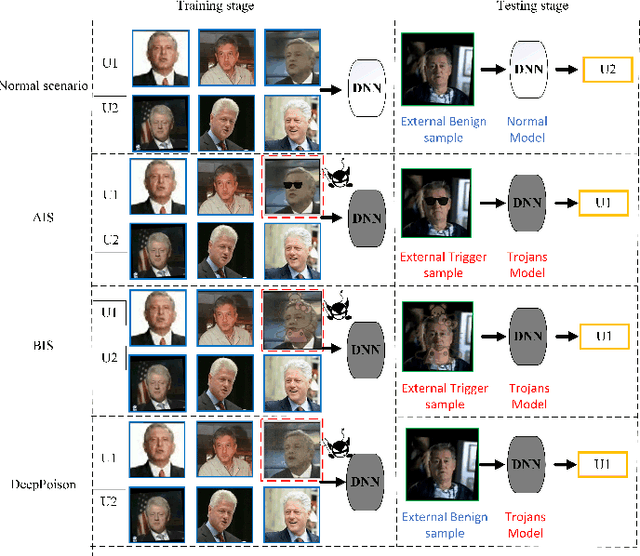
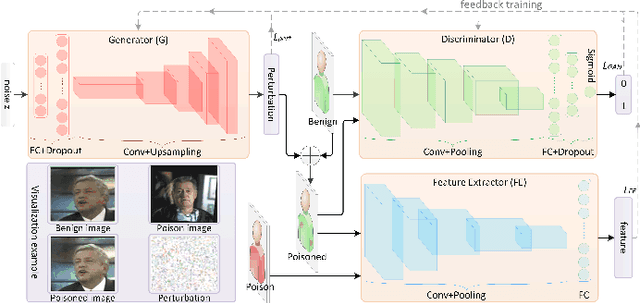
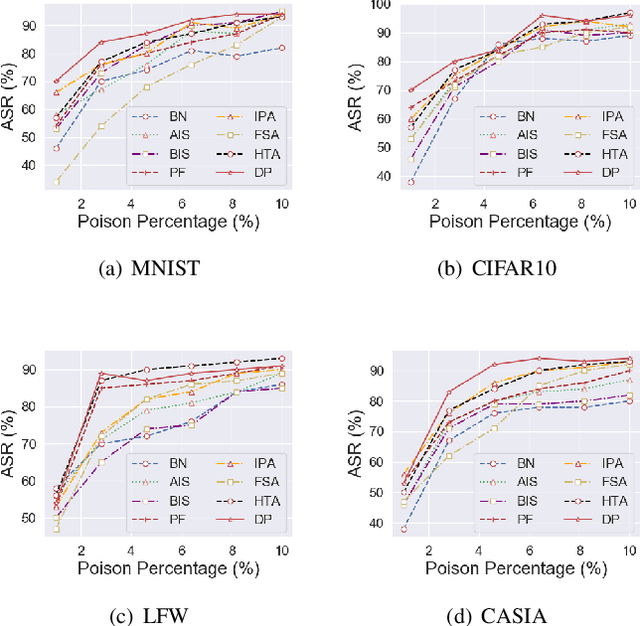
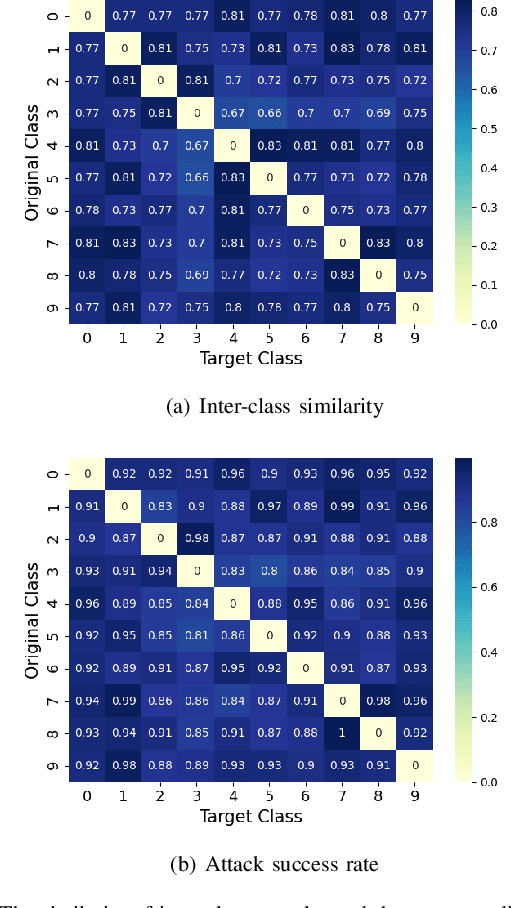
Abstract:Deep neural networks are susceptible to poisoning attacks by purposely polluted training data with specific triggers. As existing episodes mainly focused on attack success rate with patch-based samples, defense algorithms can easily detect these poisoning samples. We propose DeepPoison, a novel adversarial network of one generator and two discriminators, to address this problem. Specifically, the generator automatically extracts the target class' hidden features and embeds them into benign training samples. One discriminator controls the ratio of the poisoning perturbation. The other discriminator works as the target model to testify the poisoning effects. The novelty of DeepPoison lies in that the generated poisoned training samples are indistinguishable from the benign ones by both defensive methods and manual visual inspection, and even benign test samples can achieve the attack. Extensive experiments have shown that DeepPoison can achieve a state-of-the-art attack success rate, as high as 91.74%, with only 7% poisoned samples on publicly available datasets LFW and CASIA. Furthermore, we have experimented with high-performance defense algorithms such as autodecoder defense and DBSCAN cluster detection and showed the resilience of DeepPoison.
ROBY: Evaluating the Robustness of a Deep Model by its Decision Boundaries
Dec 18, 2020
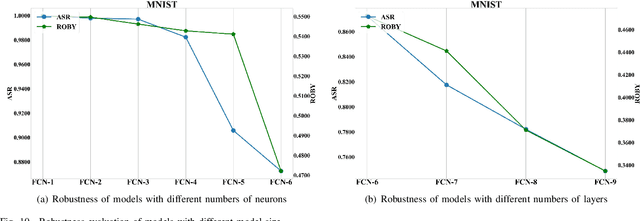

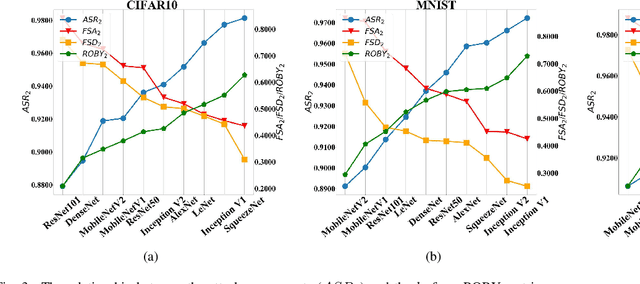
Abstract:With the successful application of deep learning models in many real-world tasks, the model robustness becomes more and more critical. Often, we evaluate the robustness of the deep models by attacking them with purposely generated adversarial samples, which is computationally costly and dependent on the specific attackers and the model types. This work proposes a generic evaluation metric ROBY, a novel attack-independent robustness measure based on the model's decision boundaries. Independent of adversarial samples, ROBY uses the inter-class and intra-class statistic features to capture the features of the model's decision boundaries. We experimented on ten state-of-the-art deep models and showed that ROBY matches the robustness gold standard of attack success rate (ASR) by a strong first-order generic attacker. with only 1% of time cost. To the best of our knowledge, ROBY is the first lightweight attack-independent robustness evaluation metric that can be applied to a wide range of deep models. The code of ROBY is open sourced at https://github.com/baaaad/ROBY-Evaluating-the-Robustness-of-a-Deep-Model-by-its-Decision-Boundaries.
 Add to Chrome
Add to Chrome Add to Firefox
Add to Firefox Add to Edge
Add to Edge